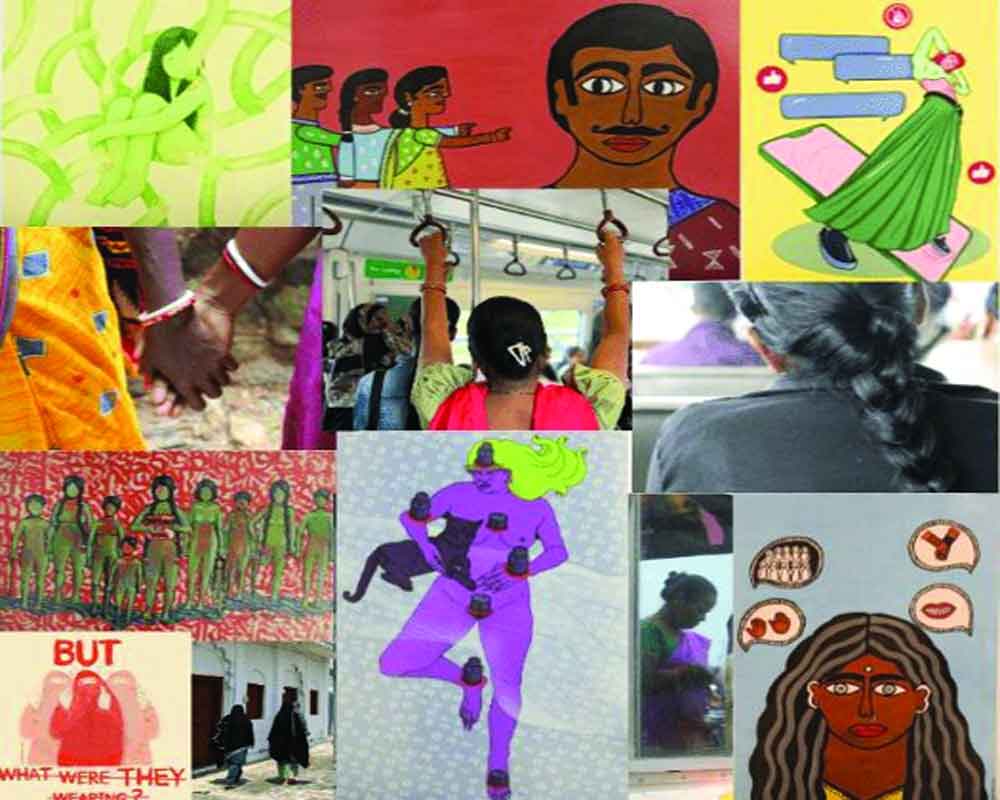Visual storytelling can promote sensitivity and empathy
A scared figure crouching in a corner, a large hand covering a mouth trying to muffle a scream, outstretched arms pleading for help, tattered clothes. More often than not, images like these accompany media reports of sexual violence against women. As a survivor of sexual harassment, Ankita Anand felt insulted looking at these images. She didn’t want to be depicted this way.
What upset her most were drawings meant to represent the survivors and create awareness that served to titillate. She decided to take matters into her own hands. The activist-turned-journalist started a campaign with a Change Org petition and directed her attention to one of the major news channels to set an example by not using disrespectful images of women in sexual violence reporting. What was needed to transform the way society perceived women was images that were not about helplessness but about the rage that challenged the oppression. Pictures that showed that women are “doers,” not always the “done upon-s.” were shared by Anand in her piece about her innovative campaign for the Network of Women in Media, India.
While her 2018 petition garnered over 47,000 signatories and also helped to spotlight an earlier Redraw Misogyny campaign by Breakthrough, an organisation working to end violence against women, many media platforms continue to churn out images that strip the victim of agency and perpetuate shame and stigma attached with rape and sexual harassment, creating a biased perception of women who have experienced sexual violence.
But now Anand and the many survivors in India and the region, no longer have to be depicted in this disempowering way thanks to the just-launched free-to-use image bank reframing visual narratives around women and sexual violence in South Asian media..
Conceptualised by the Hri Institute for Southasian Research and Exchange, Kathmandu and developed with the help of a team of artists and photographers from India and Nepal, the image bank re-imagines visual depiction of women and sexual violence to address the wide spectrum of women’s experiences. It is an outcome of a unique collaborative effort to explore the role images play in forming perceptions around sexual assault, women and gender equality. The project 'Challenging Visual Depiction of Women and Sexual Violence in Southeast Asia' led by Laxmi Murthy and Pawas Manandhar united researchers, activists, filmmakers, and artists to redefine visual portrayals of gender-based violence in cinema, media, and popular culture across Bangladesh, India, Nepal, and Sri Lanka.
The one-year project focused on challenging problematic imagery and promoting more meaningful depictions of violence and trauma. South Asian artists utilised textiles alongside illustrations and photos to narrate stories of injustices against women. It is an important artistic medium of expression, especially for those who have suffered violence, repression and discrimination as textiles are inextricably linked to the lives of people, particularly women. “I Never Ask For It,” a campaign by Blank Noise, a Bengaluru-based volunteer-led project, has been working to generate awareness of gender-based violence and end victim shaming/blaming by building testimonies of clothing. Images from this campaign can also support survivors of violence to feel heard and believed.
A picture is worth a thousand words. It can transform the way sexual violence against women is framed in the media when used sensitively and appropriately. It just needs the will to do it.
(The author is a journalist writing on development and gender. The views expressed are personal)


























